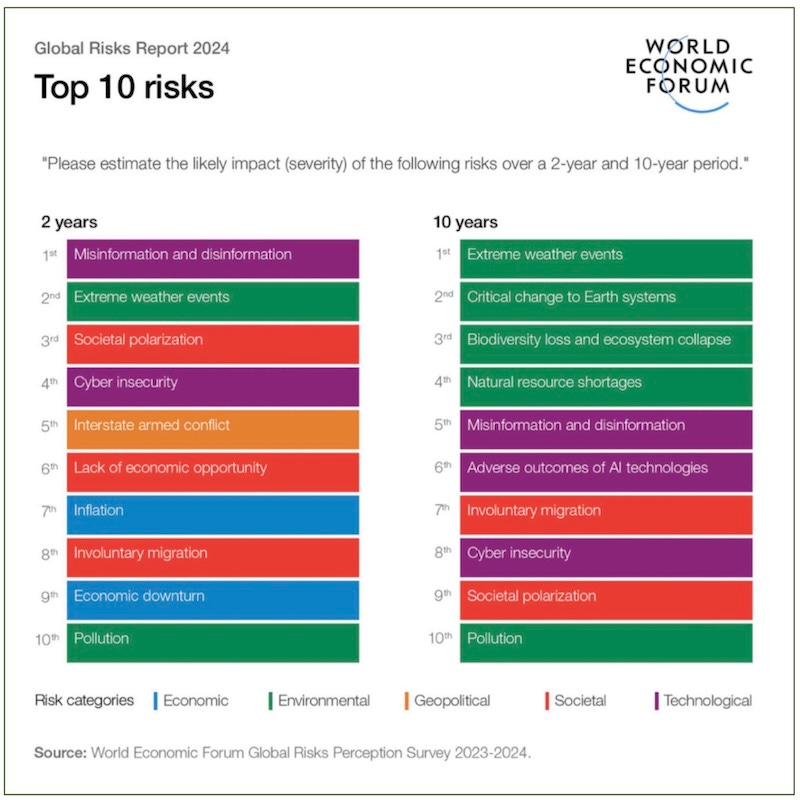It’s Always About the Money
Climate finance can feel a lot like a three-dimensional jigsaw puzzle, with too many pieces to fill in and too many angles to consider. 'Following the buck' is a first step toward the wins we need.
The last time I got to attend the annual conference of Canada’s Centre for Investigative Journalism, the theme was Follow the Buck. The basic idea was that if a topic seemed hard to follow, things would clarify quickly and reliably if you could find the money trail behind the story.
The conference took place in 1984, just a couple of years before the CIJ morphed into the Canadian Association of Journalists. But the theme, as they say in some parts of the biz, could still be ripped from today’s headlines. Because following the buck is an essential first step to understanding how we got into the climate emergency and where we stand now.
Even more important, funding and finance is the lynchpin for what we can do about it, for what winning on climate change looks like—from local city budgets, to provincial and national industrial strategy, to the grinding, process-bound negotiations at a United Nations climate conference.
There are some important but ultimately small advances we can get done mostly unassisted—in our own lives and households, or in small, informal groups. But beyond that, we know that major emission reductions won’t happen at scale without paying for the work we need done and shifting money out of high-emitting activities that have to stop. But sometimes you have to say the words out loud to bring something that obvious from the edges to the centre of the conversation.
When you start doing that with climate funding and finance, you start to see more misallocations, missed opportunities, and casually brutal injustices than can fit on a virtual page.
You also find lots of soaring examples of what we can all get done together when the dollars come through. Not only at the mega scale, but in the non-profit and co-op sectors when they have the capacity and can wrangle the funds to deliver small and medium projects that add up to a bigger result.
Production Note: As I began assembling this post, I ran across a sharp reminder of how lucky I am to practice journalism from the comfort and safety of my home office, in a part of the world that has not been torn apart brick by brick. Toronto Star columnist Shree Paradkar is out with a horrifying and deeply moving account of reporters practicing their craft under the constant, egregious threat of starvation, injury, and death in Gaza—and how hesitant our profession has been to speak up for them. As a journalist of colour, Paradkar says she’s crushed by the silence, and as I read and absorbed her column, I was, too.
There’s a fine line between amplifying social and racial justice stories and appropriating them. I hope I’m staying on the right side of that line with this note—and that more news organizations and reporters will do the same while answering Paradkar’s call. #AnaWael.
The Bucks Stop Here
You can always spot funding and financing lurking in the background of any story about climate science, impacts, response, or solutions. Except when it’s in the foreground.
It’s precisely what explains why action on climate change was delayed until this moment of dire crisis. ExxonMobil and other fossil companies understood the science of global warming in the late 1970s, but chose to spend untold millions bankrolling climate denial and delay rather than letting the rest of us in on the secret and embracing carbon reductions.
Now the U.S. fossil lobby is spending tens of millions more pitching the bogus claim that its climate-busting product is “vital” to global energy security. The Canadian Gas Association has mounted its own advertising blitz against federal climate regulations—without even the honesty or courtesy of revealing the funding sources behind its ubiquitous “Voice for Energy” campaign, according to veteran reporter Geoff Dembicki, writing for DeSmog.
The link to funding and finance shows up every day in the countries and regions that are most vulnerable to the impacts of climate change, where projects can’t get the investment they need to strengthen infrastructure, build resilience, and support thriving economies. When the money does show up, the interest rates are often exorbitant compared to the terms that investments in rich countries can attract.
And the picture isn’t nearly complete without the last couple of years of obscene, record profits across the global fossil industry, drawing in investors whose sole interest is in maximizing their quarterly returns. Meanwhile, a shift in interest rates driven by big-picture economic trends has been undercutting major renewable energy projects.
Closer to home, scores of city governments are already facing big budget crunches due to local climate disasters. Their climate investments could make a huge difference in driving down emissions and averting future harm. But too often, they run out of money before they can fully fund their local climate plans, leaving them with an impossible choice between infuriating voters with higher fees and taxes or betraying them with half-measures that won’t hit their climate targets. There are ways out of the dilemma, but they all come back to…funding and finance.
And on a smaller, more personal scale, we know that cost savings, not emission reductions, are usually the biggest motivator when people consider home energy efficiency upgrades or heat pump conversions. The up-front cost of the work is invariably the biggest hurdle, even for households that aren’t routinely forced to choose between paying the power bill or buying food.
2024 Can Buck the Trend
It all adds up to a big, sweeping problem that feels a lot like a three-dimensional jigsaw puzzle, with so many pieces to fill in and too many angles to consider. But in the last few years, we’ve seen the benefits of climate action, even more than the impacts of the climate emergency, driving an uptick in investment, holding out the possibility that 2024 will be the year that begins to buck the trend.
With veteran community advocate and achiever Olivia Chow in the mayor’s chair in Toronto, Canada’s largest city is considering a big enough one-time tax increase to begin tackling a crushing budget deficit left behind by the previous municipal administration. Toronto Star city columnist Ed Keenan argues that local voters, who elected Chow on a change agenda, might accept the high price tag if it delivers equally big shifts in areas like transit, affordable housing, homelessness, and community services, where the city is hurting the worst. Each of those is a cornerstone of a decarbonized future.
In Ontario, the promise of new investment and jobs has Premier Doug Ford’s Conservative government standing beside the federal Liberals to celebrate new auto and battery manufacturing plants and walking back its earlier, intense opposition to renewable energy development—even if the province isn’t yet embracing the full potential to replace new gas and nuclear plants with distributed energy resources. You can follow the buck and draw your own conclusions about where the money is coming from when Alberta Premier Danielle Smith upends her province’s successful renewable energy industry and launches a senseless, evidence-free attack on the federal Clean Electricity Regulations.
The Bucks Begin to Flow
On the federal scene, we can expect 2024 to bring a new wave of tax credits and other financial supports that will likely bring more good news than bad—even if some of the funding is diverted to expensive distractions like carbon capture and storage and small modular nuclear reactors, or to doomed, soon-to-be-stranded assets like the Trans Mountain pipeline.
In the United States over the last year, the Biden administration’s Inflation Reduction Act has pulled other countries into a global race to attract cleantech investment, motivated secondarily by concern about the climate emergency and primarily by a quest for investment, job creation, and tax revenues. That isn’t a bad thing if it means countries find their own reasons to invest in solving a cascading climate crisis that should already have been at the top of their priority list.
Although, even when things are going well, it’s never too early to start protecting our wins. In the U.S. and elsewhere, the necessary and welcome financial boost from government policies will be at serious risk if unhinged ideologues like Donald Trump gain power in the unusually large number of national elections coming up this year and next. (This is just Reason #3,756 to make sure America’s favourite sociopathic insurrectionist ends up behind bars and out of office.)
2023 also brought added urgency and growing momentum for gains in international climate finance, as long as the rise of faux populism doesn’t erode support for shifting the trillions needed to drive down emissions and address devastating climate impacts in the world’s poorest countries. Two releases last year helped demonstrate what’s possible and what’s needed:
• The International Energy Agency reported that clean energy investment exceeded the new money pouring into fossil fuels for the third year in a row.
• Oxfam International issued a devastating indictment of a global system in which one year of emissions from the richest 1% will kill 1.3 million people this century from excess heat alone.
Through both lenses, it’s crystal clear that the climate agenda in 2024 will always be about the money—same as it ever was. With COP28 issuing its declaration last month that calls for a transition out of fossil fuels, attention is turning to implementation at every level, from local to international. That will have to include an all-out push on financial institutions, international agencies, and anyone else with a budget to spend big bucks where they’ll deliver the best, fastest impact.
Mitchell Beer traces his background in renewable energy and energy efficiency back to 1977, in climate change to 1997. Now he and the rest of the Energy Mix team scan 1,200 news headlines a week to pull together The Energy Mix, The Energy Mix Weekender, and our weekly feature digests, Cities & Communities and Heat & Power.
Chart of the Week
Oil Companies Delay Emission Cuts Pending Results of Next Federal Election
O’Donnell and Ramana: ‘PR Fairy Dust’ Has Canada Tripling Nuclear Capacity by 2050
2023 Made Life ‘Miserable, Sometimes Deadly’ as Warmest Year on Record
‘Shocking’ Study Finds Logging Devastates Canada’s Boreal Forests
Canada Needs More Clean Power to Deliver on Green Industrial Strategy, Champagne Warns
U.S. Judge Sends Landmark Youth Climate Case to Trial
Solid-State Battery Breakthrough Could Double EV Range
Enbridge Gas Reopens Quest for Ottawa-Area Pipeline Replacement
Trans Mountain Aims to Fill Pipeline by May Despite Pending Regulatory Decision
Later Is Too Late to Act on Climate Change (Potential Energy)
Scientists Are Already Bracing for Record-Breaking Heat in 2024
Ksi Lisims project attracts Shell as first purchaser of its LNG (Globe and Mail)
U.S. oil production forecast to reach new heights despite drilling slowdown (Financial Times)
Shareholder advocacy group alleges misleading disclosures on sustainable finance from Canada’s big five banks (Globe and Mail)
Investors 'flying blind' into legal risk of climate change, Oxford researchers warn (Pensions & Investments)
Big Oil’s bid to woo ESG investors fails to impress (Reuters)
$32B and 30% drop as climate tech market hits pause in 2023 (CTVC)
Climate tech looks to shake off its doldrums in 2024 (Impact Alpha)
Companies face emissions reporting mandates even as Canada lags behind (The Canadian Press)
Prolonged drought keeps B.C. village in state of emergency (Globe and Mail)
Why people don’t have to pay anything for electricity in this Florida community (Washington Post)
The man who lost faith in electric aviation (Globe and Mail)








